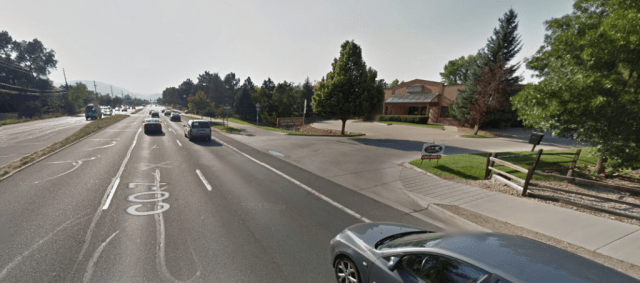Boulder faces an interesting decision in the wake of an Ignite Boulder talk by Code for America’s Becky Boone, exhorting a relatively young, tech-savvy audience to engage in the city’s civic sphere. Some have objected to her use of profanity, but given the positive response of the 21 and over crowd and the content of past Ignite talks, these concerns are overblown. Daily Camera columnist Steve Pomerance and neighborhood blogger Kay MacDonald have tried to level a more substantive criticism: they feel that Boone’s presentation was pro-growth, and that such advocacy would be inappropriate for even an off-duty city consultant.
I’ve watched the talk repeatedly, and transcribed it word-for-word. Boone clearly takes no such stance.
She highlights the accessibility and value of participating in our local democracy, and gives a couple of positive examples: the Fairview High Net Zero Club’s campaign to implement a grocery bag fee, and an unidentified citizen group gathering signatures for a fall ballot measure whose content is unmentioned. She also asks her audience their thoughts on whether Boulder’s housing issues result from too many jobs, or insufficient housing — a question that’s been raised by Boulder Housing Partners commissioner Dick Harris, among others.
None of these statements is political advocacy.
Rather, the political content of Ms. Boone’s presentation resides with her choice of audience. The Ignite crowd and Boulder’s startup community are younger and newer to Boulder than those traditionally engaged in city governance. They’re also probably more likely to be renters. Despite the city’s laudable efforts to recruit representative citizen working groups, these demographics have been woefully underrepresented in our housing policy process. We know this because we’ve collected demographic data at the city’s housing events. Engaging the Ignite Boulder audience makes our discussion more representative of our citizenry. This is good for our democracy. It also has political implications.
By definition, rallying a disinterested population to participate dilutes the power of those who are already engaged. To their credit, and despite this difficult set of political incentives, the city has prioritized “developing new approaches and tools that support more inclusive, transparent, collaborative, and interactive community engagement” in the development of our Comprehensive Housing Strategy. This is exactly the job that Becky Boone was hired to do, and which she has apparently done a bit too well for the comfort of some incumbent interests.
We now have a choice, and it’s an unavoidably political choice. Do we want to cultivate a representative democracy in Boulder that proactively seeks input from as broad a population as possible, or would we prefer a narrowly targeted discourse that is intended, through its choice of media and venues, to preserve the status quo?
If we choose to limit our communications and data collection to serve incumbent interests, then we must admit that Boulder has become a fundamentally conservative place. The choice to collect or avoid data or is often political. When congressional Republicans vote to de-fund NASA’s work documenting climate change, or block the use of statistical sampling in the census, they are advocating an Orwellian world in which Ignorance is Strength.
Boulder should be better than that, and so I favor proactive engagement, as I believe much of City Council does. They need our support to make the right choice: to stand behind Ms. Boone and build upon her valuable work in Boulder going forward. We should live stream and archive any city meeting taking place in Council chambers on a well used platform like YouTube. We should subtitle the archived versions in Spanish. We should expect our elected and appointed policymakers and city staff to participate competently in social media, and use it as the incredibly cost-effective and democratically empowering platform that it has become worldwide. It’s been a long time since the Internet was the exclusive domain of a technological elite — today it is the people’s platform, much more so than Wayne’s World style public access cable TV, or even our beloved Daily Camera. Newer digital platforms that are accessible to parents with young children and full time jobs need to be weighed heavily in our policy discussions, right alongside inconvenient, time-consuming public meetings.
Given last week’s firestorm of activity in support of Boone on Twitter I suspect that going forward, Boulder politicians and policymakers will ignore the digital realm at their peril. Just because you do not take an interest in social media, does not mean that social media will not take an interest in you.



